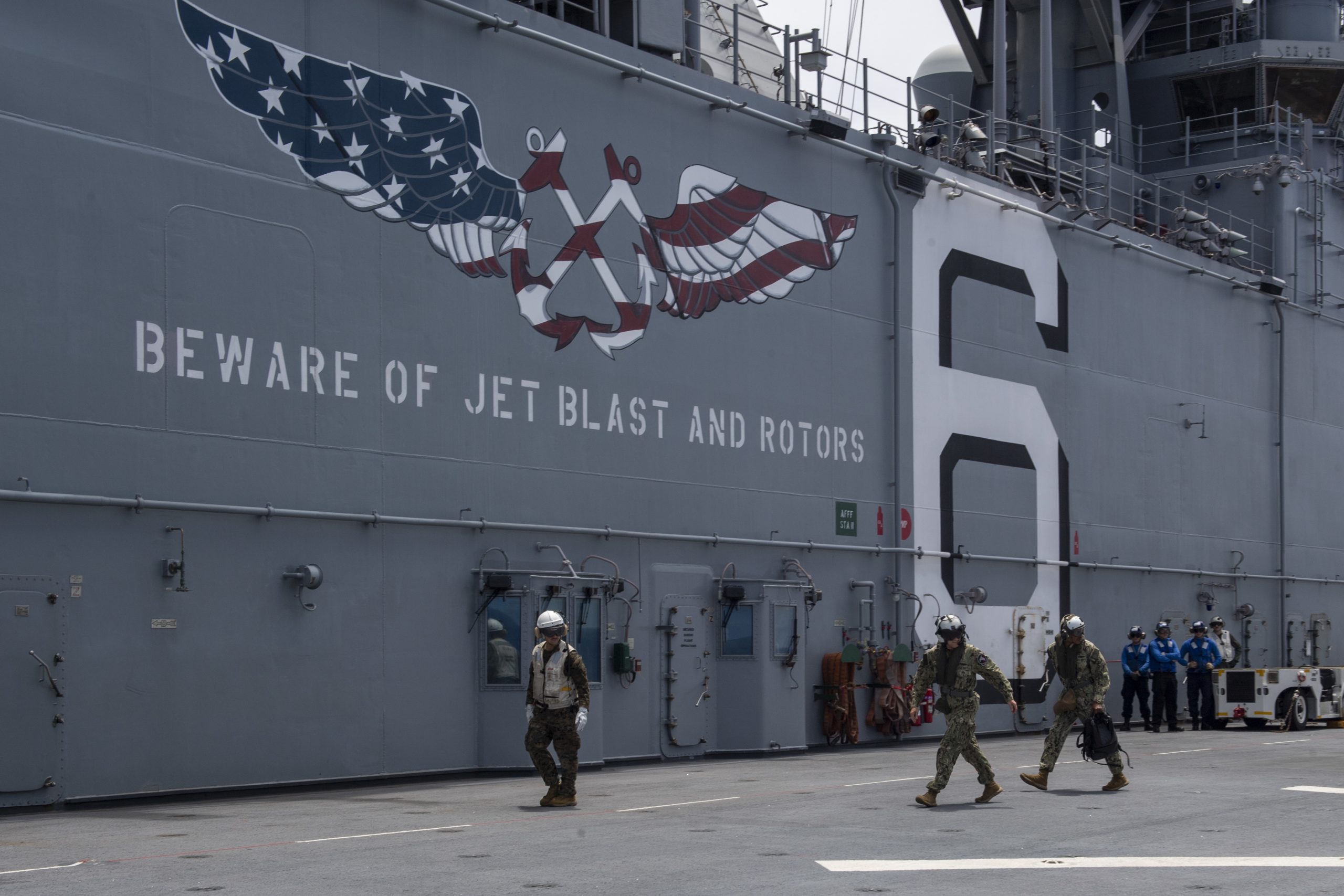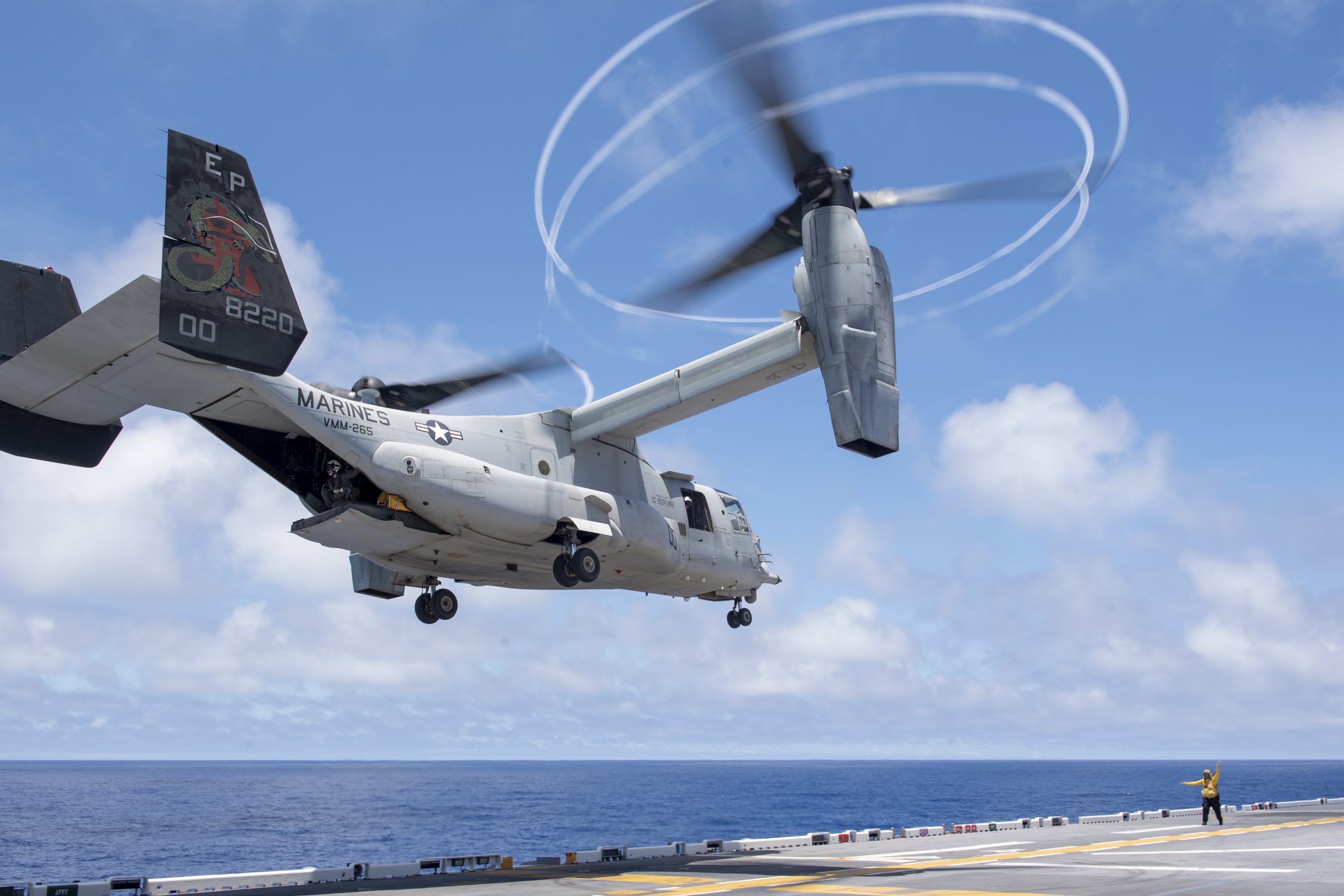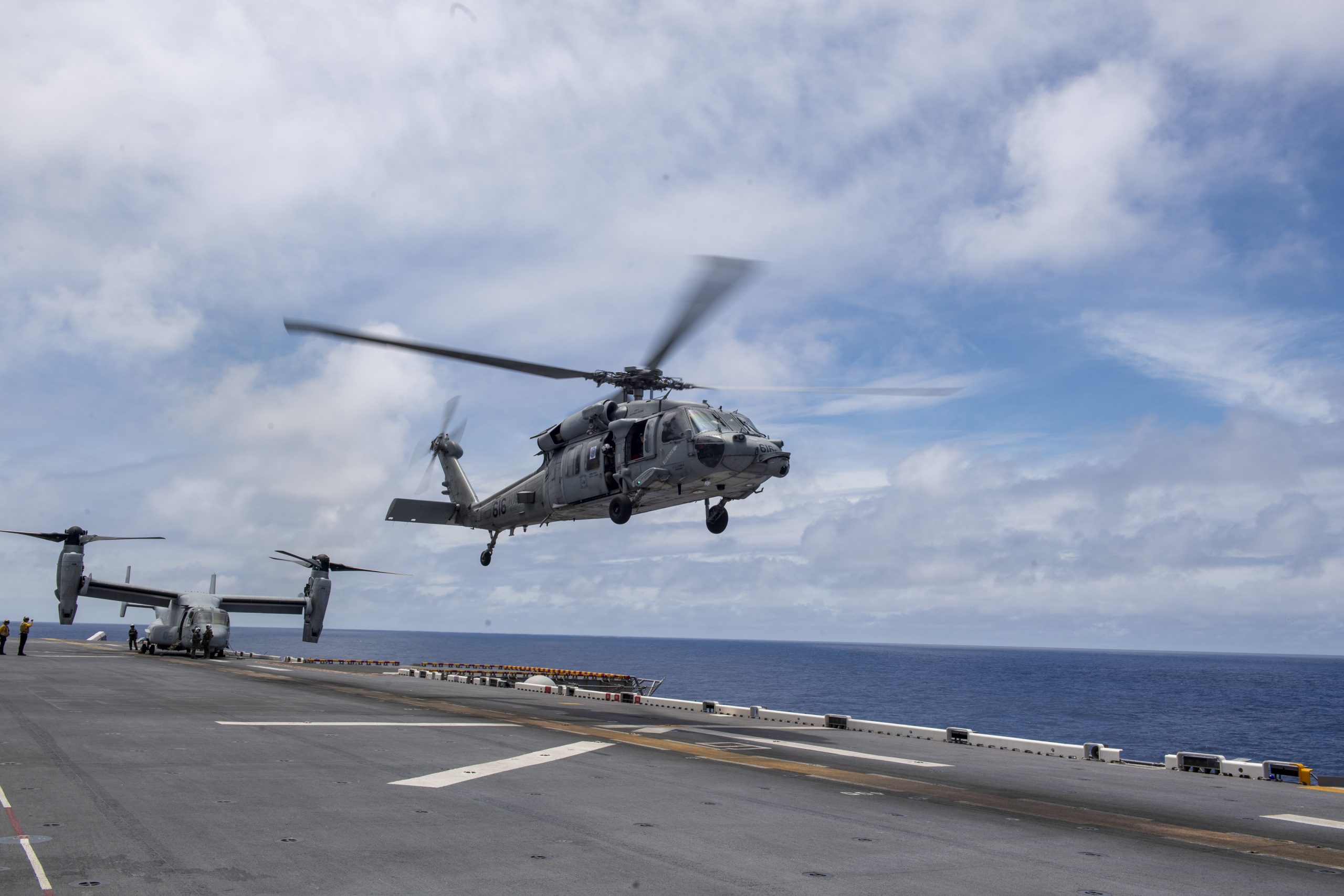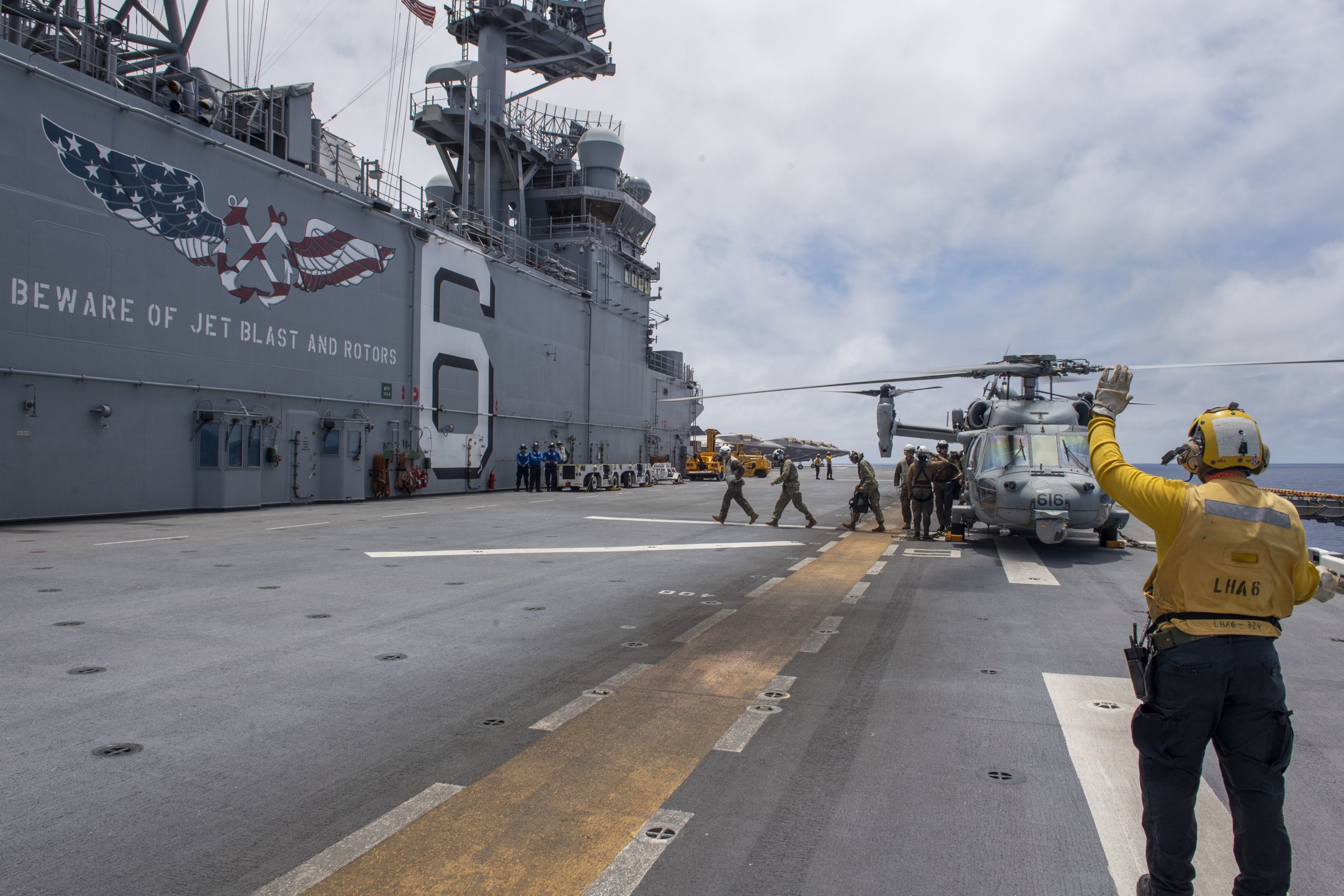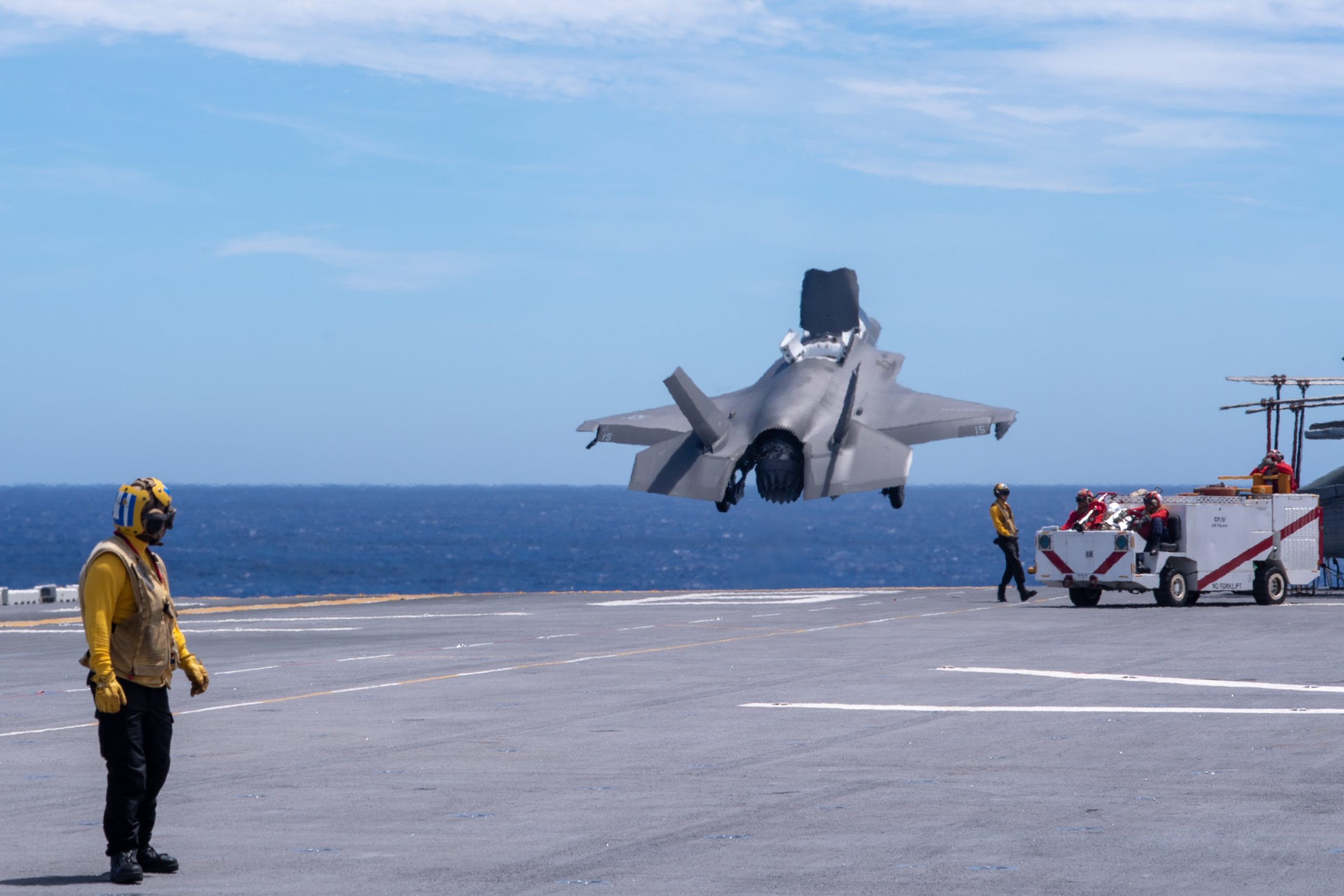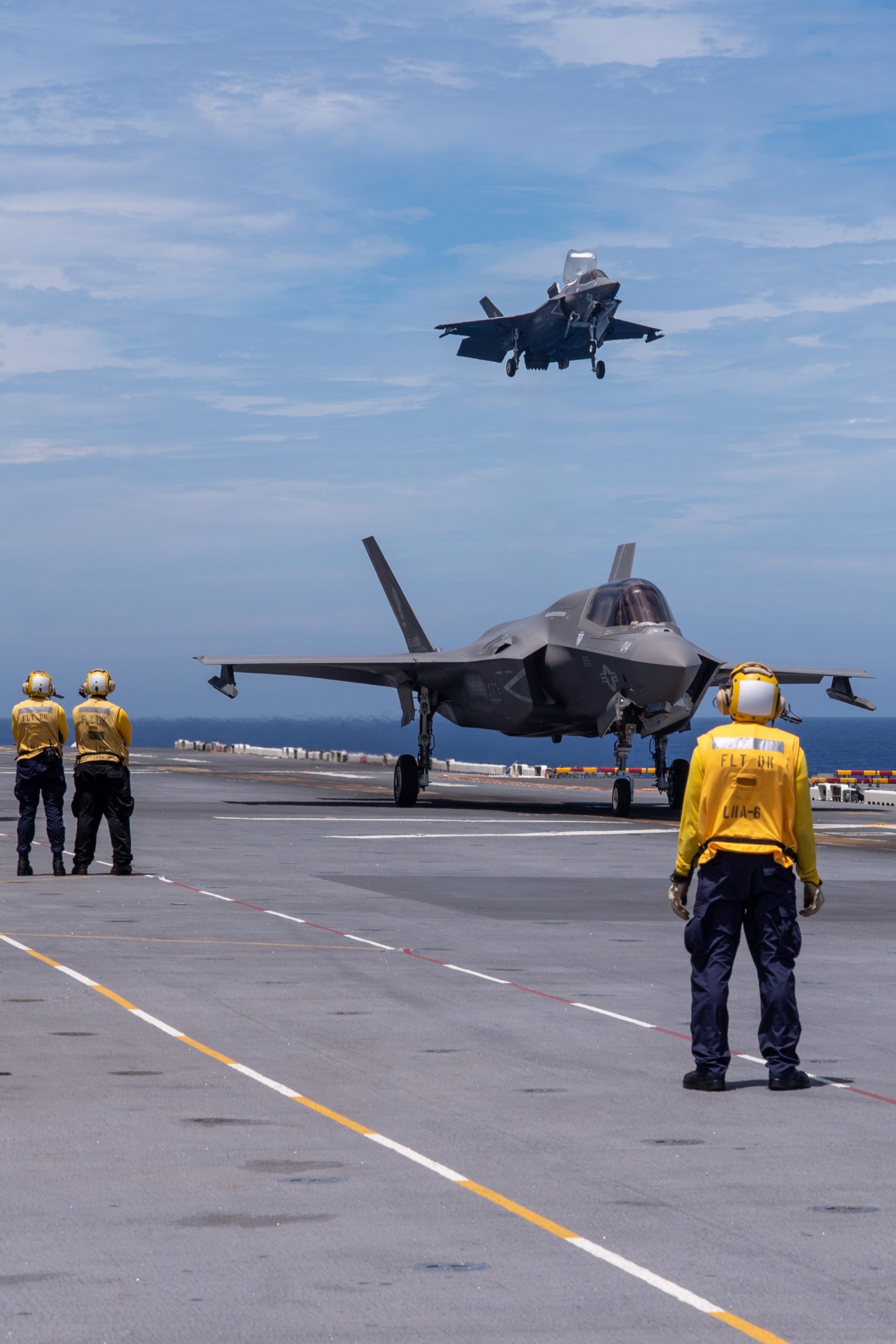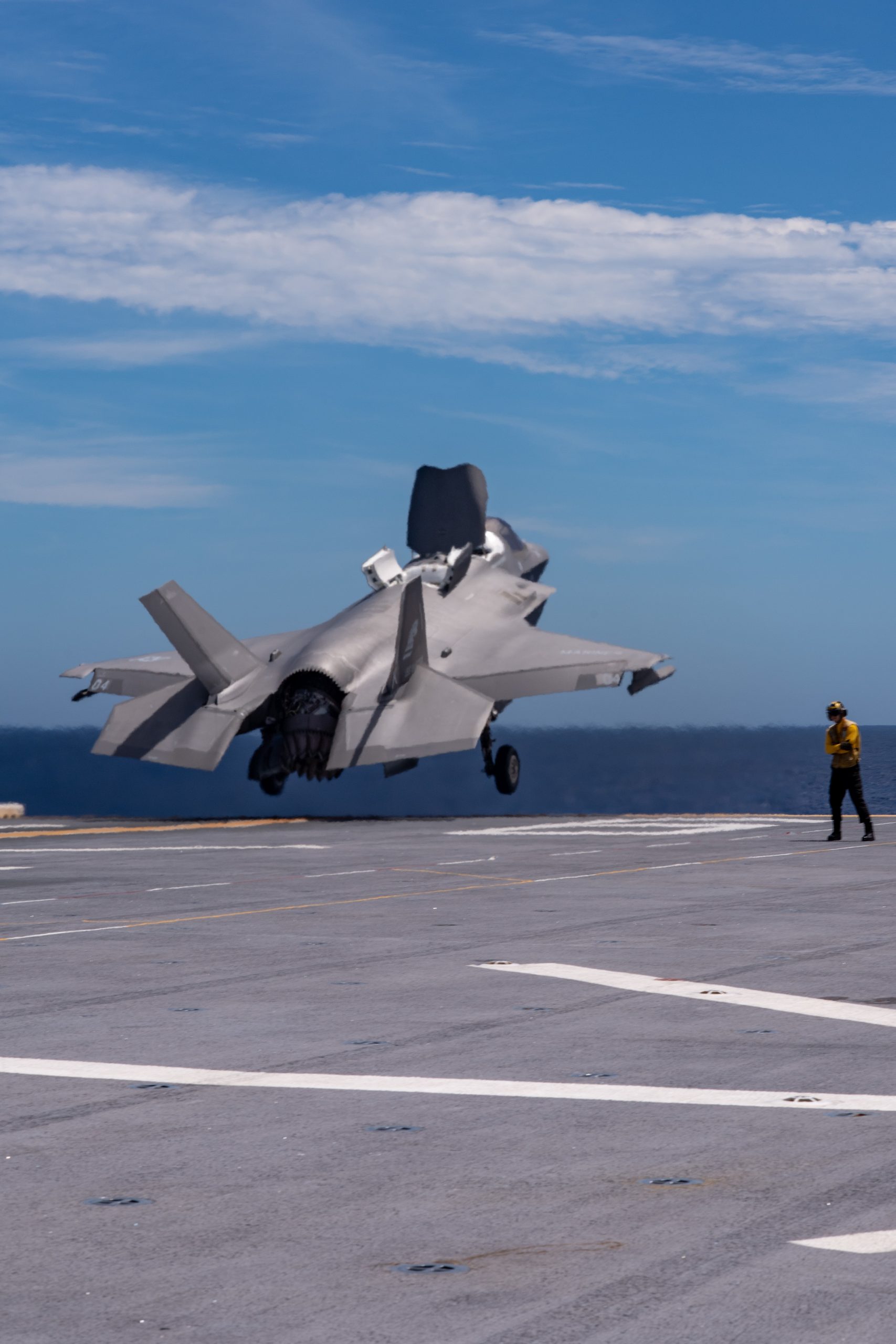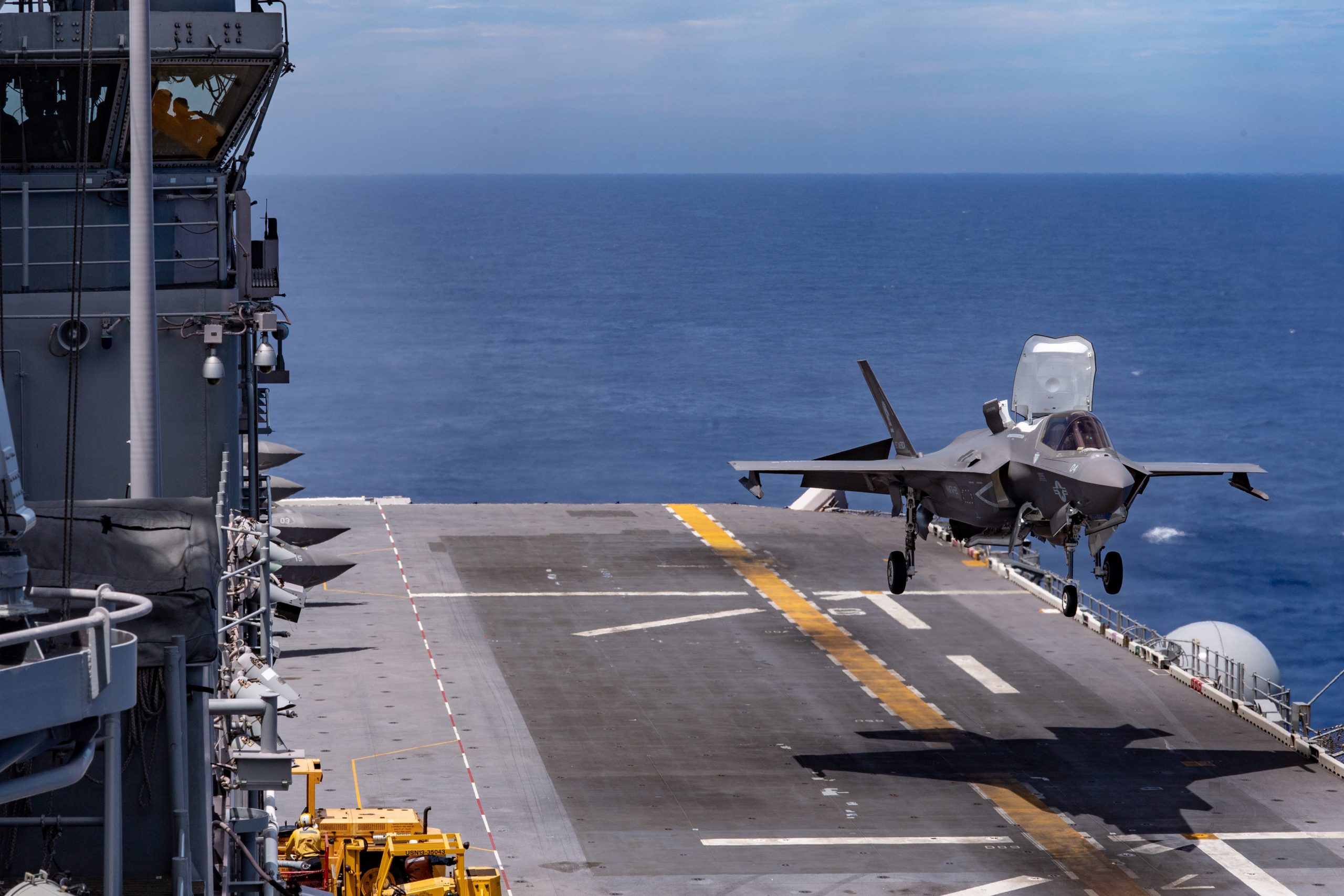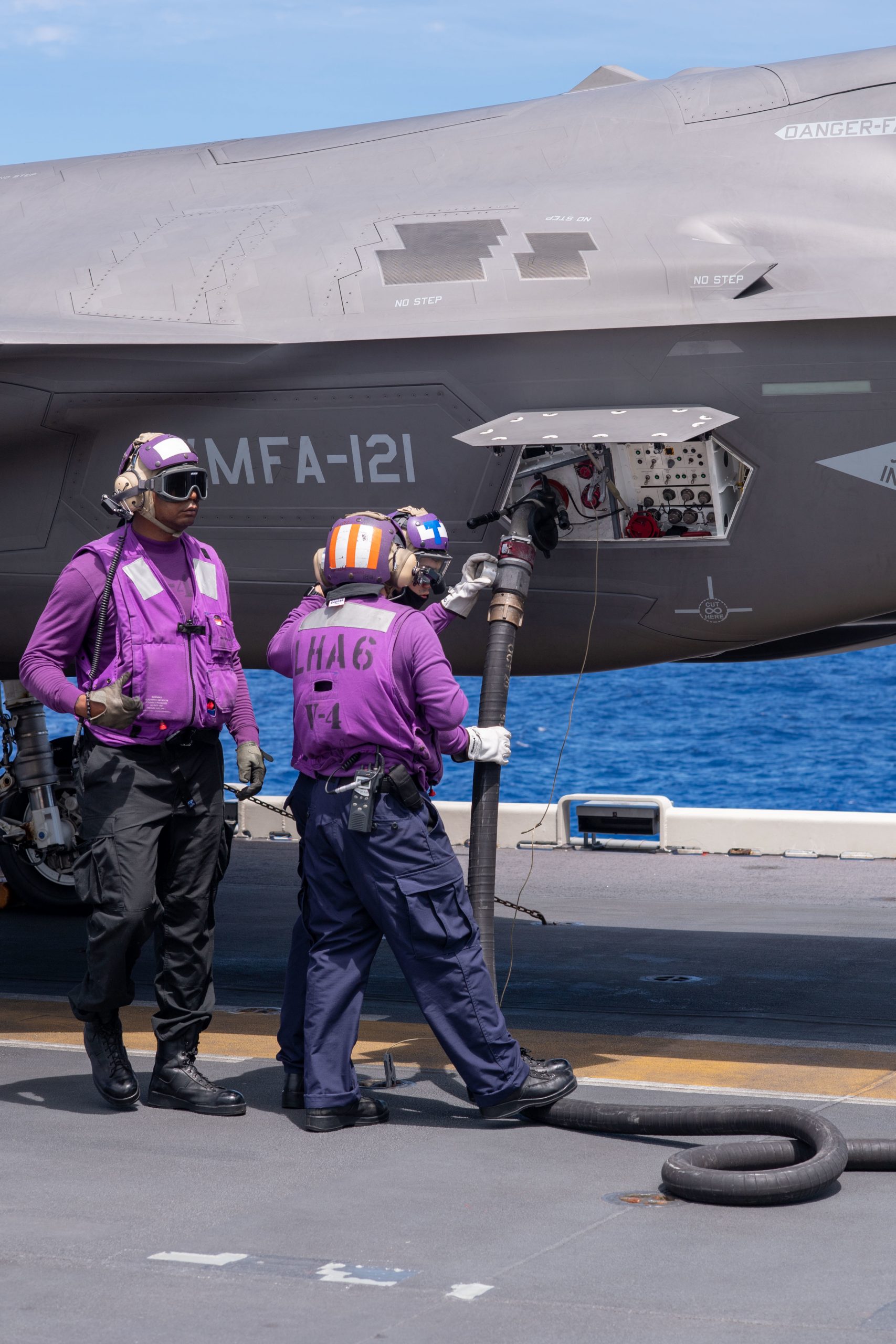As seen in the featured photo from June 2, 2021, Vice Adm. Bill Merz, commander, U. S. 7th Fleet, is seen arriving aboard the forward-deployed amphibious assault ship USS America (LHA 6).
America, lead ship of the America Amphibious Ready Group is operating in the U.S. 7th Fleet area of operations to enhance interoperability with allies and partners and serve as a ready response force to defend peace and stability in the Indo-Pacific region.
Amphibious shipping and capabilities organized into flexible task forces form a key part of the blue water expeditionary maneuver force for the U.S. Navy and forms a key bedrock for further USMC and US Navy integration.
But as 1MEF Commander, Lt. General Heckl has underscored in our interview with him:
Clearly, the Marines like the rest of the joint force is working through how best to deter the Chinese and to engage in operations over an extended area or over an extended battlespace. This is clearly a work in progress. He noted that I MEF has a great working relationship and is enhancing integration with Third Fleet but both on located on the West Coast of the United States. How best to operate forward?
This entails the question of how to do effective blue water expeditionary operations. This entails the question of how to work the Pacific geography with allies and partners to get the maximum political-military and combat effect.
It is also a question of taking advantage of new ways to operate as well. For example, as seen in the Black Widow Exercise in the North Atlantic, the Marines can certainly contribute to ASW operations. How might the Marines assist more effectively the Navy in sea denial and sea control in the Pacific?
A key limitation for the Marines in the Pacific for sure is that size, and state of the amphibious fleet. It is clear that operating at sea and from the sea with Marine Corps air assets provides very agile and powerful force insertion assets to deliver crisis management effects.
But the decline in the numbers of amphibious ships is a critical problem, and how best to rebuild the fleet is a work in progress.
Allies are expanding their amphibious forces, in South Korea, Japan and Australia.
And allies are adding F-35Bs and Ospreys to their force.
How can the USMC best leverage this upsurge in capabilities?
It makes little sense to further devolve the U.S. amphibious fleet as allies themselves see greater utility in this force for crisis management and warfighting.
As Lt. General Heckl put it: “My biggest concern right now is amphibious shipping and connectors.” And in this sense, the expeditionary force leverages what the Navy and Marines have now, but creative thinking about how to build out an amphibious fleet is clearly needed, but to build actual integrable assets as well.
In our forthcoming USNI book, we argue that shaping a kill web enabled maritime force can build upon re-imaging how to leverage the amphibious force.
We argued: “The evolution of the amphibious force and shaping amphibious task forces can contribute significantly to expanded capabilities for maneuver warfare at sea.
“By leveraging the new air capabilities, adding new defensive and offensive systems on the fleet, and expanding the C2 and ISR capabilities of the fleet, the contribution of the amphibious task force can be reimagined, redesigned and thereby enhance the combat power of the US Navy in maneuver warfare at sea.”
As Lt. General Heckl put it forcefully: “The challenge seen from I MEF is that for us to be effective we need to be credible.
‘To be credible, we need to be forward with credible forces.
“We are focused on positioning the MEF to be in a position to be an effective deterrent force.”


